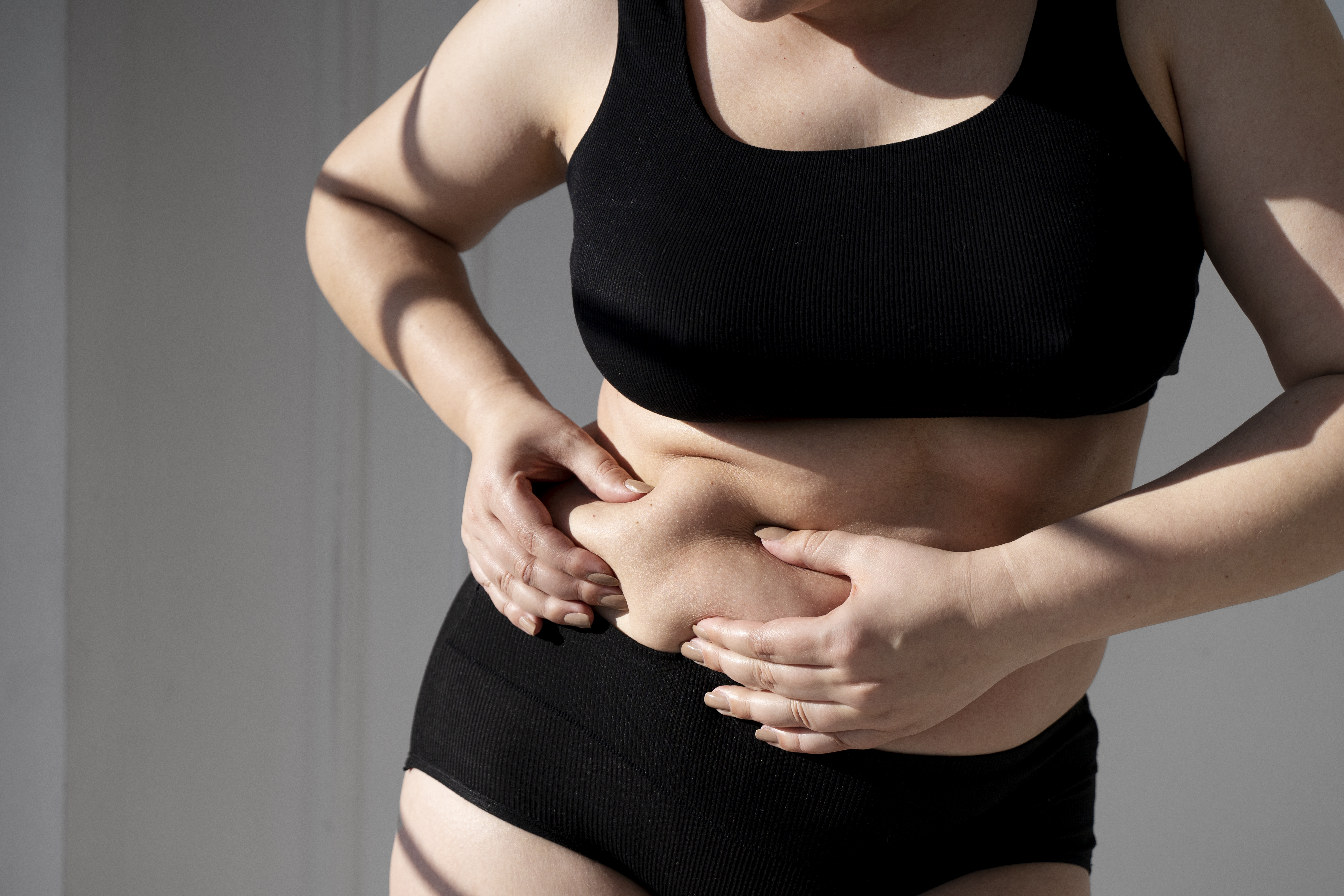Built to help women have a 360° approach to health through perimenopause to post-menopause.
welcome to MY BLOG
How Hormones Trigger Belly Fat and How to Tackle It

January 27, 2025
Belly fat is one of the most frustrating changes women experiences, especially during the transition to menopause. You may have been slim all your life or successfully lost weight, yet that stubborn belly fat persists. This issue goes beyond appearance, it’s often signalling deeper hormonal imbalances.
Who Develops Belly Fat?
Belly fat becomes more noticeable after the age of 45, even in slim and active women, and often worsens after 50 unless specific changes are made. Hormonal shifts during perimenopause and menopause play a significant role, though they’re not the only reasons. Women with belly fat often show signs of insulin resistance (IR), even if they’re not diabetic. Here’s how insulin resistance contributes to this issue.
Types of Belly Fat: Visceral vs. Subcutaneous
Belly fat consists of two types:
Visceral Fat: Wraps around your organs deep in the abdominal cavity and is more dangerous. It releases hormones and inflammatory compounds that affect your overall health.
Subcutaneous Fat: Lies just beneath the skin and is less concerning.
- Visceral fat raises risks for serious health conditions, including:
- Oestrogen dominance (visceral fat produces oestrogen)
- Cardiovascular disease and stroke
- High blood pressure
- Colon cancer
- Sleep issues and cognitive decline
- Gallbladder disease and arthritis
Women with an apple body shape are more prone to insulin resistance than those with a pear shape.
Belly Fat and Insulin Resistance
Belly fat often indicates insulin resistance, a condition where cells stop responding to insulin, leading to high insulin and blood sugar levels. This contributes to weight gain, particularly around the belly.
Common Causes of Insulin Resistance:
1. Sugar and Refined Carbs: Excessive consumption over time can damage insulin receptors.
2. Aging: Insulin sensitivity decreases with age, especially near menopause.
3. Medications: Some medications for high blood pressure, depression, or cancer can promote insulin resistance.
How Insulin Resistance Affects Hormones
Insulin is a hormone that impacts other hormones, creating imbalances. High insulin levels convert testosterone into oestrogen, causing oestrogen dominance and worsening insulin resistance. Belly fat also affects cortisol and thyroid hormones, contributing to further weight gain.
Signs of Insulin Resistance:
- Belly fat, particularly around the waist
- Skin tags on the neck or body
- High blood pressure
- Cravings for sugar and carbs
- Daytime drowsiness and insomnia
If you notice these symptoms, consult your doctor for lab tests to check insulin levels.
How to Tackle Belly Fat and Insulin Resistance
The good news is that you don’t need extreme measures like surgery to address belly fat. A balanced approach combining lifestyle changes, diet, and supplements can target the root causes.
1. Diet
Reduce inflammation by following a whole-food, low-sugar diet.
Eliminate inflammatory foods like gluten, dairy, and soy.
Start your day with a protein-rich breakfast to stabilise blood sugar.
2. Exercise
Prioritise weight training and resistance exercises, which improve insulin sensitivity.
Avoid excessive cardio, which raises cortisol levels and worsens belly fat.
3. Reduce Inflammation
Aim for at least 8 hours of sleep and a consistent bedtime.
Practice gratitude and maintain a positive mindset to manage stress.
4. Balance Hormones
Focus on balancing:
Oestrogen
Cortisol
Insulin
Thyroid hormones
Supplements like magnesium, Vitamin D3, and omega-3s can support hormone balance and reduce inflammation.
Losing belly fat isn’t just about appearance it’s about restoring hormonal balance and improving overall health. By addressing insulin resistance, reducing inflammation, and balancing hormones through lifestyle changes, you can tackle belly fat naturally and effectively.
In clinic, we look at uncovering hormonal imbalances like cortisol, oestrogen, progesterone, and testosterone, which may be driving weight gain.
For more tips, practical guidance on supporting your metabolism and achieving a healthier lifestyle follow @louisethetherapist or see more about Louise here
Thanks for reading
Louise x
Leave a Reply Cancel reply
I have a reputation as a compassionate and innovative therapist who produces rapid and lasting changes with my clients. Are you ready to become my next success story?
Website Designed W/ Love By Traveller By Trade
Copyright © 2021, Louise The Therapist
Privacy Policy